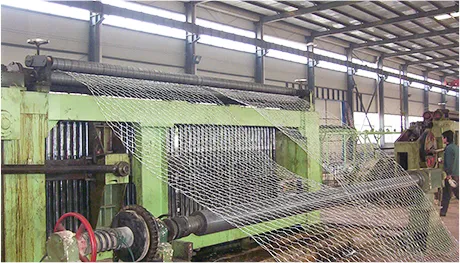-
 Phone:
Phone: -
 Email:
Email:

rockfall netting
Rockfall Netting An Essential Solution for Slope Stability
Rockfalls pose a significant risk in mountainous and hilly terrains, where loose stones can detach from slopes and cascade downwards, threatening infrastructure, pedestrians, and vehicles. The implementation of rockfall netting has emerged as an essential solution to mitigate these risks. This innovative engineering method not only protects landscapes but also ensures safety in regions where nature's unpredictability can lead to disastrous consequences.
Rockfall netting involves the installation of engineered mesh or nets on steep slopes, often supplemented with anchors and support systems. The primary function of these nets is to catch and stabilize falling rocks, preventing them from reaching critical areas below. By containing the debris, rockfall netting reduces the potential damage to roads, railways, buildings, and other essential structures that might otherwise be in the path of falling rocks.
The materials used in rockfall netting are specifically designed to endure harsh environmental conditions
. High-tensile steel cables, often coated for corrosion resistance, form the backbone of the netting system. The mesh itself comes in various sizes and configurations, allowing for flexibility in addressing different geological conditions and types of rockfalls. This adaptability is crucial, as every hillside presents unique challenges based on rock composition, slope angle, and weather influences.rockfall netting

One of the significant advantages of rockfall netting is its relatively low environmental impact compared to other slope stabilization techniques. Traditional methods, such as retaining walls or massive rock barriers, can disrupt the natural landscape and ecosystem. In contrast, netting systems are less invasive and can be designed to blend seamlessly into the surroundings. This not only preserves the aesthetic appeal of the area but also maintains the local wildlife habitats that might otherwise be affected by more disruptive engineering solutions.
Moreover, rockfall netting systems are often designed for easy maintenance. Regular inspections and minor repairs can usually be conducted without extensive downtime, thereby minimizing disruptions in the areas they protect. In many instances, local authorities and environmental agencies support the use of rockfall netting as a sustainable solution for long-term slope management.
The integration of rockfall netting into modern engineering practices underscores the importance of balancing safety concerns with environmental stewardship. As extreme weather conditions become more frequent due to climate change, the implementation of these protective systems is expected to grow, ensuring that communities situated near rocky terrains can thrive safely.
In conclusion, rockfall netting represents a vital advancement in slope stability and landslide prevention. Its efficacy in safeguarding lives and infrastructure, coupled with its environmentally friendly design, makes it an indispensable tool in geotechnical engineering. As we continue to explore innovative solutions to combat natural hazards, rockfall netting stands out as a key element in preserving both human life and the integrity of our natural landscapes.
-
Uncompromised Slope Safety with Advanced Rockfall Protection NettingNewsJun.09,2025
-
The Smart Choice of Chain Link FenceNewsJun.09,2025
-
Securing the Future with Time-Tested Barbed Wire ProtectionNewsJun.09,2025
-
Reliable and All-Season Fencing with Premium Hexagonal Wire MeshNewsJun.09,2025
-
High-Performance Binding Solutions with Premium Loop Tie WireNewsJun.09,2025
-
Durable, Flexible, and High-Performance Baling Wire for SaleNewsJun.09,2025
-
Unveiling the Versatility of Hexagonal Wire MeshNewsMay.21,2025








